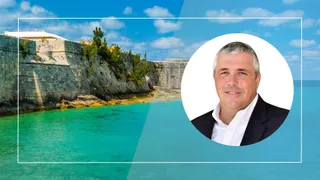.jpg/r%5Bwidth%5D=320/309bcdc0-861f-11ef-8040-d11d6afa4d36-Viktor%20Hladchenko_shutterstock_1378030559%20(3).webp)
Convergence: Start-ups possible by the end of the year
At least one property and casualty reinsurer is likely to be formed before the end of the year, according to industry experts.
Speaking at ILS Bermuda’s Convergence conference, members of a panel named How Public Market Valuations of Reinsurers Shapes the ILS Opportunity said it was possible up to three could form, although they would not constitute the kinds of “classes” that had emerged in previous hard markets.
To some degree that was because of the growth of the capital efficient Insurance-Linked Securities market but also because investors were more enamoured with the life and annuity reinsurance sector, they said.
David King, founder and senior managing director of Culpeper Capital Partners, said he had been in the market testing for start-up capital and said he believed more than one vehicle would be funded.
But he added that the explosive growth of long-term reinsurance had been a “massive distraction” as was the increase in capital light managing general agencies.
Discussing why there had been no Class of 2023, he also noted that the re/insurers that had formed in 2020 and 2021 had not yet gained liquidity, meaning their core investors had not had an opportunity to exit their investments.
King, who is a director of Bermuda-based Mosaic and of Canopius, which has significant Bermuda operations, said there had also been no “capital destruction”.
“The market needs to see some balance sheet destruction that would drive the need for capital. Maybe we will have that in short order,” he said, in an apparent reference to the looming threat of Hurricane Milton to Florida.
He added that he could potentially see investors launching a casualty start-up given that some segments were suffering from lack of capacity.
Aditya Dutt, president of Aeolus Capital Management, said the classes of 1992, 2001 an, 2008 had come into being before the emergence of the ILS market.
“There was no ILS for most of those market turns, but now there is $100 billion of capital that bypasses all these vehicles,” he said. “These are shock absorbers built into the capital market which does not let it go into the start-ups.”
Nonetheless, he thought it was possible that there could be two or three reinsurers started before the end of the year, and suggested that the last four to five years could be looked at as one class, which would incorporate earlier start-ups like Bermuda-based Convex, Conduit and Mosaic.
“Billions of dollars more have come into the market compared to 1992,” he added. “Billions of dollars of capital have been raised. It just does look like it did 20 years ago.”
Kyle LaBarre, co-director of property and casualty research and partner at Dowling & Partners, said there was no shortage of capacity today, in stark contrast to the conditions that led to previous classes.
“The market is better and pricing has improved but there has been no destruction of capacity,” he said. “
Raoul Lobo, vice president at insurance company investor Stone Point Capital said the fundamental value proposition for start-ups “is not there right now”, adding that even with a moderate pricing dislocation there was not enough return on equity to attract investors.
He added that ILS vehicles were much more capital efficient for private equity investors, and if a collateralised vehicle was used, this gave a clean exit strategy through a date and price mechanism.
Did you get value from this story? Sign up to our free daily newsletters and get stories like this sent straight to your inbox.

